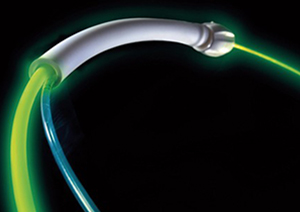
What is Greenlight Laser Prostatectomy?
Greenlight laser prostatectomy is a safe, effective and efficient treatment to ease the urinary symptoms in patients with benign prostatic hyperplasia (BPH), enlargement of the prostate gland. It is a minimally invasive procedure which utilizes a 532nm wavelength laser to remove the excess prostate tissue blocking the urethra by vaporization. This laser appears green in color so this surgery is also called green light laser therapy. The laser with this specific wavelength is chosen as it is selectively absorbed by the blood within the prostate and poorly absorbed by water. The procedure is also known as Photoselective Vaporization of the Prostate (PVP).
The prostate is a small, walnut-shaped gland that is only present in men. It is involved in providing nutrition to sperm and assisting in their transport.
It is common for the prostate gland to become enlarged as a man ages. As the prostate enlarges, the layer of tissue surrounding it stops it from expanding, causing the gland to constrict the urethra. This leads to a number of urination and bladder problems such as urinary hesitancy, frequent urination, urinary tract infection, and urinary retention. This is referred to as Benign Prostatic Hyperplasia (BPH). BPH is more common in men above 60 years of age.
Advantages of Greenlight Laser Prostatectomy
Greenlight laser prostatectomy has several advantages over other treatment procedures for benign prostatic hyperplasia, including:
- Minimal blood loss. It virtually causes no bleeding as the laser creates a 1-2 mm zone of coagulation necrosis around the area of vaporization. The laser also cauterizes the ruptured blood vessels during the surgery controlling any bleeding.
- Offers immediate symptomatic relief and significant improvement in urine flow after the surgery.
- Excellent safety profile with side effects similar or less than traditional procedures, such as transurethral resection of prostate
- Long-term symptomatic relief lasting for at least five years
- The procedure is also safe and effective for patients on anticoagulation therapy.
Indications for Greenlight Laser Prostatectomy
Green light laser prostatectomy is indicated in these patients to remove the excess prostate tissue blocking the urethra to ease the urinary symptoms.
Procedure of Greenlight Laser Prostatectomy
Green Light Laser prostatectomy is performed under general or spinal anesthesia The laser is delivered through a flexible fiber passed through a cystoscope, a tube-like instrument with a light and a camera at one of its ends. The cystoscope along with the flexible fiber is inserted through the urethral opening of the penis. The real-time images from the cystoscope are displayed on the monitor in the operating room. The surgeon controls the direction and delivery of the laser energy through the flexible fiber tube, under the guidance of real-time imaging. Laser energy is delivered as small bursts, lasting for a few seconds, to vaporize the prostate tissue. A continuous flow of irrigation fluid is maintained to remove the cut prostate tissue, keep the fiber tip cool and to maintain a clear view of the operative area. The cystoscope with the fiber is slowly manipulated through the urethra, removing the obstructing prostate tissue thereby enlarging the space within the urethra and restoring normal urine flow. At the end of the procedure, a catheter is placed in the bladder and is usually removed the next day after surgery.
Patients are usually discharged on the same day of the procedure but may be kept overnight and discharged the next day.
What are the Risks and Complications?
All surgical procedures are associated with some risk. Although Greenlight laser prostatectomy is a relatively safe procedure, complications can occur.
Some of the less serious complications include hematuria (blood in urine), dysuria (pain while urination) and incontinence. These usually resolve within a few weeks of the surgery. Urinary tract infection may occur in a few cases and can be managed with antibiotics.
Longer term, some men will experience retrograde ejaculation, in which semen does not come out of the penis during orgasm. Normally the prostate is essential for propelling semen forwards during orgasm and removal of part of the prostate can allow semen to slip backwards into the bladder.
One disadvantage of the green laser prostatectomy is that as prostate tissue is vaporized it is not available for pathological analysis. This is important as there is a small probability of prostate cancer being present in BPH patients.
Green light laser prostatectomy is an effective alternative to transurethral resection of the prostate (TURP) in patients with enlargement of the prostate gland.
